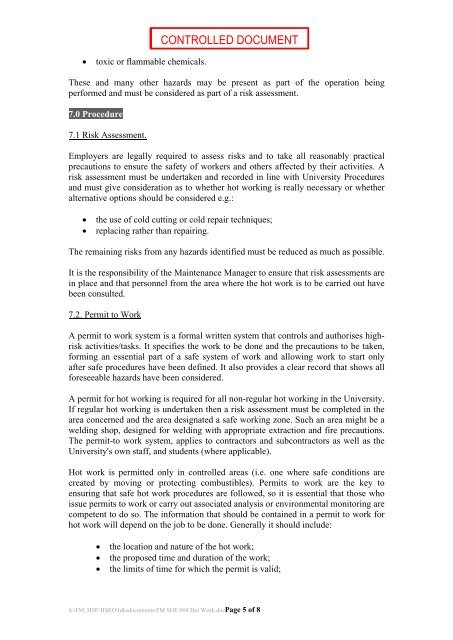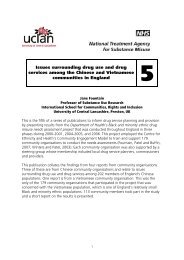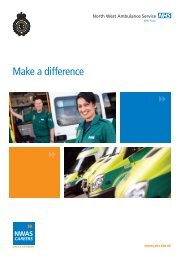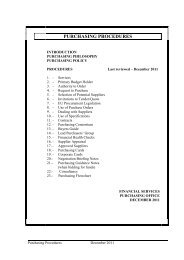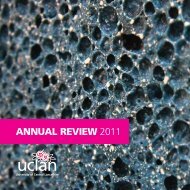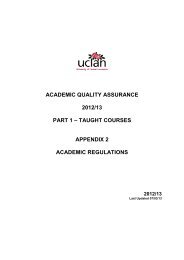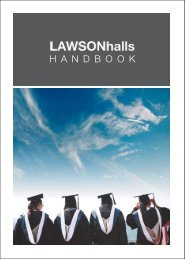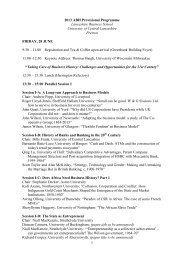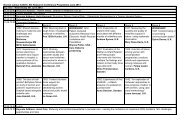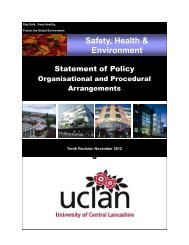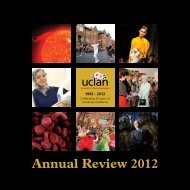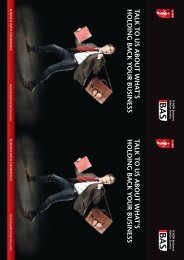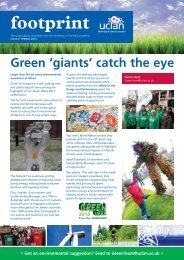Procedural Guidance for Hot Work - University of Central Lancashire
Procedural Guidance for Hot Work - University of Central Lancashire
Procedural Guidance for Hot Work - University of Central Lancashire
You also want an ePaper? Increase the reach of your titles
YUMPU automatically turns print PDFs into web optimized ePapers that Google loves.
toxic or flammable chemicals.<br />
CONTROLLED DOCUMENT<br />
These and many other hazards may be present as part <strong>of</strong> the operation being<br />
per<strong>for</strong>med and must be considered as part <strong>of</strong> a risk assessment.<br />
7.0 Procedure<br />
7.1 Risk Assessment.<br />
Employers are legally required to assess risks and to take all reasonably practical<br />
precautions to ensure the safety <strong>of</strong> workers and others affected by their activities. A<br />
risk assessment must be undertaken and recorded in line with <strong>University</strong> Procedures<br />
and must give consideration as to whether hot working is really necessary or whether<br />
alternative options should be considered e.g.:<br />
the use <strong>of</strong> cold cutting or cold repair techniques;<br />
replacing rather than repairing.<br />
The remaining risks from any hazards identified must be reduced as much as possible.<br />
It is the responsibility <strong>of</strong> the Maintenance Manager to ensure that risk assessments are<br />
in place and that personnel from the area where the hot work is to be carried out have<br />
been consulted.<br />
7.2. Permit to <strong>Work</strong><br />
A permit to work system is a <strong>for</strong>mal written system that controls and authorises highrisk<br />
activities/tasks. It specifies the work to be done and the precautions to be taken,<br />
<strong>for</strong>ming an essential part <strong>of</strong> a safe system <strong>of</strong> work and allowing work to start only<br />
after safe procedures have been defined. It also provides a clear record that shows all<br />
<strong>for</strong>eseeable hazards have been considered.<br />
A permit <strong>for</strong> hot working is required <strong>for</strong> all non-regular hot working in the <strong>University</strong>.<br />
If regular hot working is undertaken then a risk assessment must be completed in the<br />
area concerned and the area designated a safe working zone. Such an area might be a<br />
welding shop, designed <strong>for</strong> welding with appropriate extraction and fire precautions.<br />
The permit-to work system, applies to contractors and subcontractors as well as the<br />
<strong>University</strong>'s own staff, and students (where applicable).<br />
<strong>Hot</strong> work is permitted only in controlled areas (i.e. one where safe conditions are<br />
created by moving or protecting combustibles). Permits to work are the key to<br />
ensuring that safe hot work procedures are followed, so it is essential that those who<br />
issue permits to work or carry out associated analysis or environmental monitoring are<br />
competent to do so. The in<strong>for</strong>mation that should be contained in a permit to work <strong>for</strong><br />
hot work will depend on the job to be done. Generally it should include:<br />
the location and nature <strong>of</strong> the hot work;<br />
the proposed time and duration <strong>of</strong> the work;<br />
the limits <strong>of</strong> time <strong>for</strong> which the permit is valid;<br />
S:\FM_HSE\HSEO\h&sdocuments\FM SHE 004 <strong>Hot</strong> <strong>Work</strong>.docPage 5 <strong>of</strong> 8


